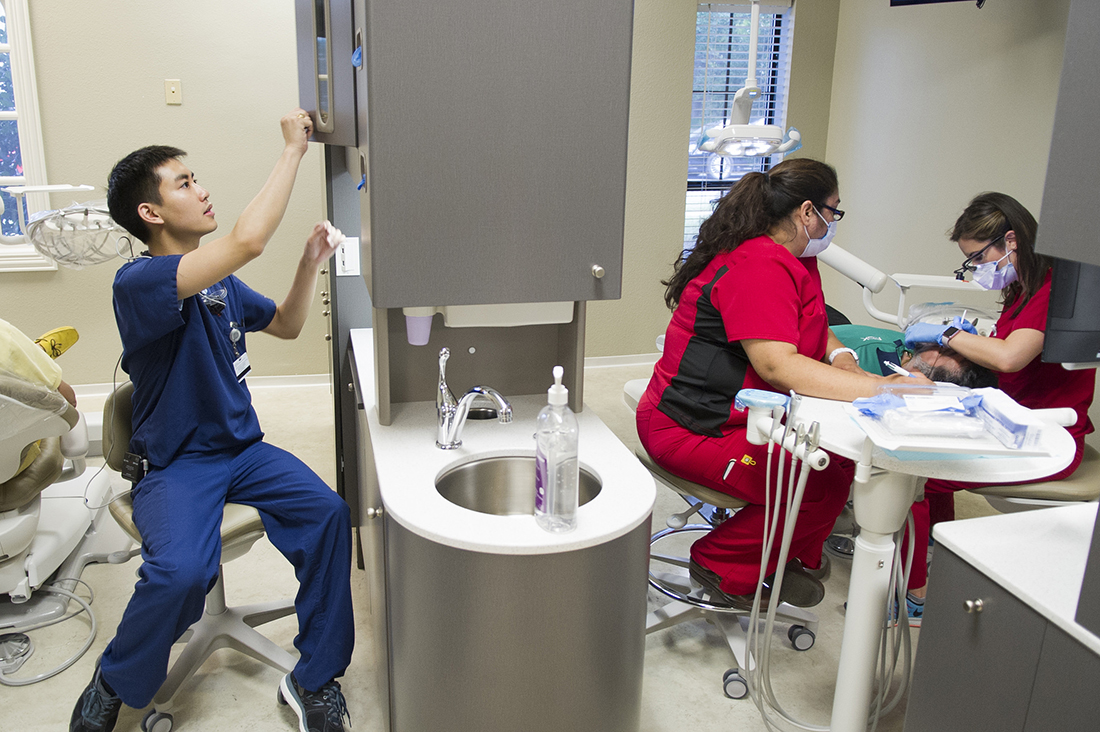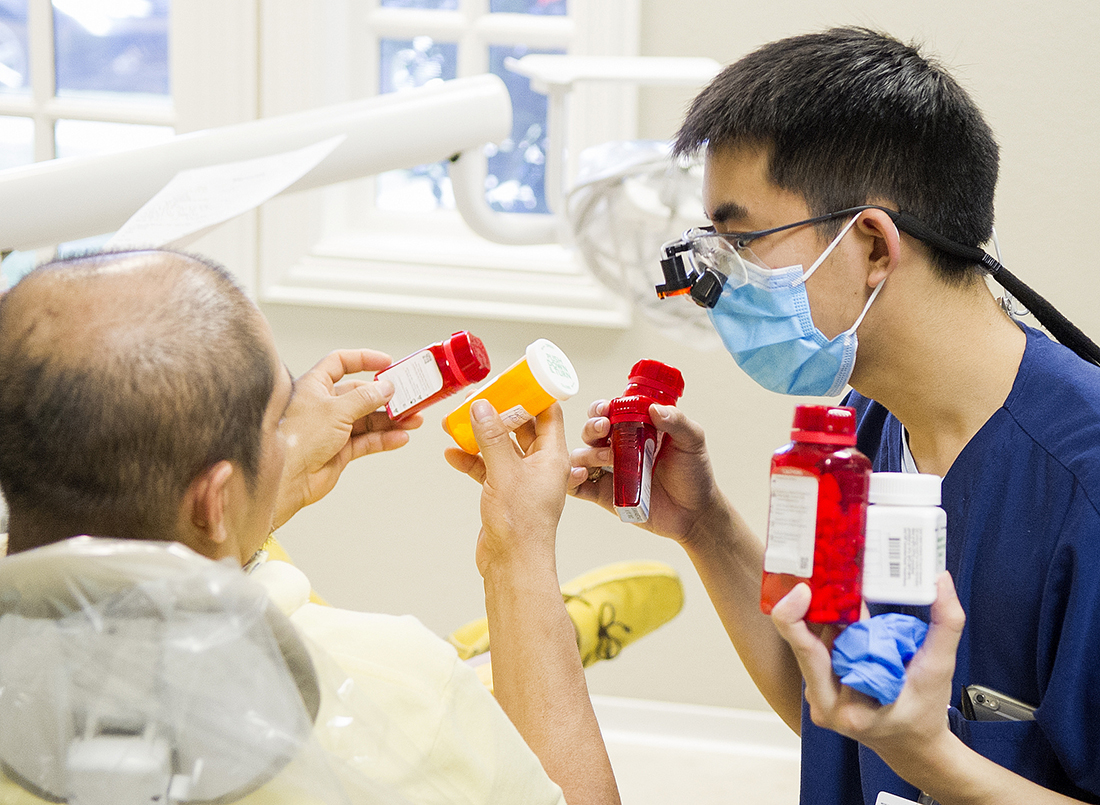A grand opening celebration

There was an interesting transformation in patients at the Agape Clinic in 2013. That was the year the clinic’s 2,700-square-foot space in the basement of Grace United Methodist Church underwent a dramatic overhaul. While the clinic had come a long way from its previous environs in a 12-by-13 foot room in the church basement to accommodate five exam rooms and access to volunteer physicians at the top of their fields, it didn’t look top notch.
“We didn’t look like the best medical care you could receive,” says Stephanie Bohan, executive director of Agape Clinic. “We didn’t have the dignity of an appointment; it was all walk-in, and people sat in the lobby with their heads down.” The floor, mottled with holes, was in dire need of rehabbing.
Post-renovation, patient dignity went up, and with it, demand. This need was met with more volunteers, who were easier to recruit because of the clinic’s improved appearance. The volunteer base grew and grew, giving Bohan the opportunity to seek community partners.
By early 2015, Texas A&M University College of Dentistry administrators were looking for partnerships for the college’s community-based clinical training program. And with patients at Agape expressing an overwhelming desire for dental care, a natural collaboration commenced. But with such tight quarters, services were limited to pediatric dental screenings.
During one of those initial meetings, as Paul Hoffmann, administrative director of extramural clinics at the dental school, and Dr. Dan Jones, chair of public health sciences, huddled into an exam room with Bohan, they suggested just what could be accomplished if the dental school had more space at Agape.
“We’d like to have six or seven rooms,” Hoffmann told her.
“If they hadn’t said that, hadn’t been interested in finding a community partner, then none of this would have happened,” says Bohan. “We had no reason to go buy a building. We had just renovated.”
The conversation helped fuel an 18-month, $3.6 million initiative to expand operations at Agape.
On June 25, those efforts became a reality with the grand opening of the clinic’s new 10,000-square-foot Baxter-Crowley Agape Health & Wellness Center just across the street. There’s ample room to grow in the space, a former ear and hearing clinic that has been converted for dental and medical use.


Half of the ground floor is devoted to dental care, with seven operatories. Dental students will rotate to this clinic as part of their training, providing comprehensive care for all ages, including everything from cleanings and digital radiography to extractions, fillings and root canals. Long-term plans are to provide fixed and removable prosthodontics, with crowns, bridges and full dentures. Through funding from the 1115 Healthcare Transformation Waiver, the college was able to purchase $600,000 of dental equipment and chairs for the facility.
Other health care services provided within the same building include:
- allergies and asthma;
- dermatology;
- women’s health;
- neurology;
- pediatrics;
- ophthalmology;
- counseling and mental health; and
- endocrinology.
True to Agape’s mission to be a patient-centered medical home, as dental students screened individuals downstairs during the grand opening, the North Texas Food Bank led healthy snacking demonstrations in the community room upstairs. Meanwhile, despite the constant flow of patients to and from the building’s medical wing, nearly every chair in the waiting room was taken.

Proximity to multiple health disciplines means even closer partnership with Dallas teaching institutions such as UT Southwestern Medical Center, the Baylor Louise Herrington School of Nursing and even Methodist Charlton Medical Center.
“We are going to be able to integrate our services with medical while also expanding behavioral health,” says Hoffmann. “They are seeing a population that one would think would go to Parkland Hospital, but for whatever reason, Parkland is inaccessible to them, whether financially or geographically. It is good for our students to experience seeing patients in these settings.”
While the current number of patient visits a year averages about 10,500, that figure is expected to double. This will happen without any increase to Agape in terms of operational costs, thanks to commitments from the dental school and other health care institutions to staff the clinic.
“Rarely if ever do you get to say, ‘If you just fund this building, it will all come together,’” says Bohan. “If A&M hadn’t been willing to do what it did, and if the Corrigan Goddard Foundation hadn’t been able to step up with a $1 million grant, we wouldn’t be here.”